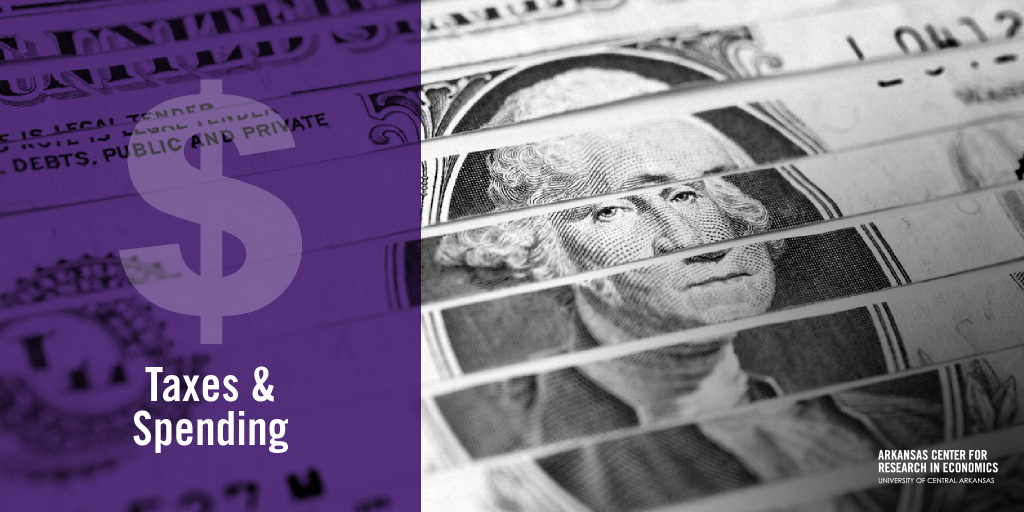By Caleb Taylor
What’s one tool states can use to weather financial downturns?
David Mitchell and Dean Stansel have been studying state fiscal crises for more than a decade.
As state finances falter from COVID-19’s impact, Mitchell and Stansel draw on their research in a recent opinion article in RealClearPolicy to show how long term reserve funds, often referred to as “rainy day funds,” can help states as revenue falls and spending increases. RealClearPolicy is an online media platform that publishes opinion, news, analysis, and more with a focus on research from think tanks, associations, and foundations. In their article, “Where States’ Rainy Day Funds Stand as We Debate Bailouts” they talk broadly about “Rainy Day Funds” which, in Arkansas’s case, is called the Long-Term Reserve Fund.*
Mitchell, a UCA Associate Professor of Economics, and Stansel, a senior research fellow at the O’Neil Center for Global Markets and Freedom, also argue a federal bailout of states with inadequate reserve fund balances would be imprudent. These states should instead “show more fiscal restraint” during the next economic expansion to be better prepared for future recessions.
Referencing their paper, “The Determinants of the Severity of State Fiscal Crises,” published in Public Budgeting and Finance, Drs. Mitchell and Stansel said:
Our findings indicate that states which increase spending faster during good times tend to end up paying for that extravagance later with worse fiscal crises during recessions.”
They identify two different kinds of causes: program expansions increasing expectations of future funding (like California and Kansas) and the cost of overspending dollars instead of saving them (like New York and Illinois).
Moreover, states with strict withdrawal rules on how reserve funds are spent tend to experience less severe fiscal crises during recessions.
Drs. Mitchell and Stansel said:
However, not all RDFs are created the same. They need two things to function best: strict deposit rules and strict withdrawal rules. If there is no deposit requirement, legislators and governors will not put much money into their rainy day fund. It’s always more fun to spend now than save for later.”
You can read the entire article here.
*For more on the distinction between Arkansas’s Long-Term Reserve Funds and Arkansas’s Rainy Day Funds, check out Mitchell’s blog post entitled “Why Arkansas’s Long-Term Reserve Fund May Not Weather the Next Rainy Day.”
Mitchell and Stansel’s paper entitled “State Fiscal Crises: Are Rapid Spending Increases to Blame?” published in the Cato Journal analyzes how government spending increases during economic expansions worsen state fiscal crises.
UCA Assistant Professor of Economics and ACRE Scholar Dr. Jeremy Horpedahl also joined Jay Bir of Capitol View on KARK on March 8 to discuss Gov. Asa Hutchinson’s proposed state budget and ACRE research on the Long-Term Reserve Fund.

